An Urwerk with Central Hands…? Meet the new UR-10 Spacemeter
An Urwerk fitted with central hands, a round dial and counters...? That's unexpected...
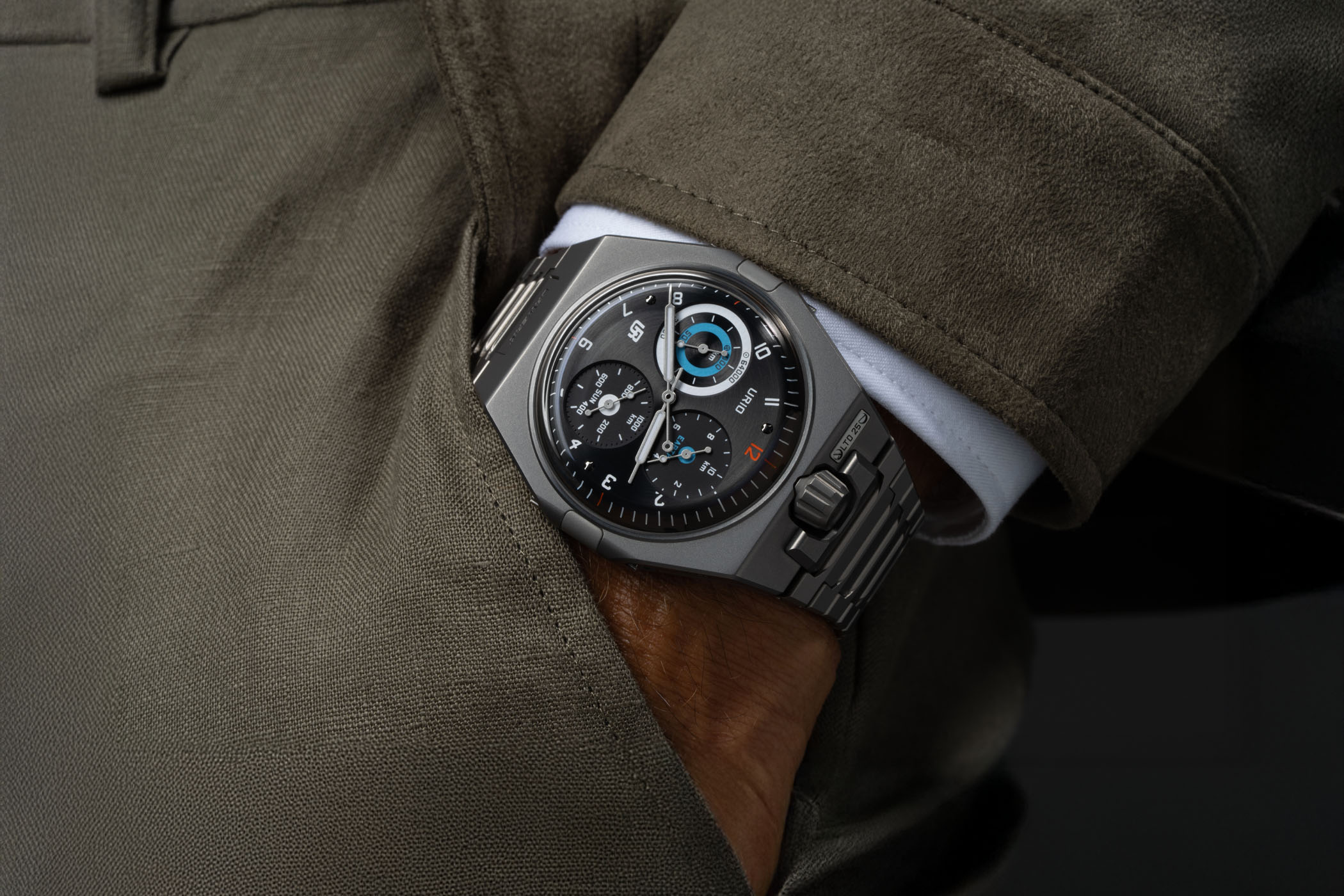
Now that is something paradoxical… An Urwerk watch equipped with centrally-mounted hands rotating traditionally on top of a round dial, with concentric counters underneath. That’s nothing what you’d expect to see from Urwerk, a brand known for its unconventional displays of the time with wandering hours and satellites. Look at our retrospective of the entire production of Urwerk, and you’ll only find one watch with classic hands… And that EMC Watch is nothing but a proper horological UFO anyway. But here we are with the Urwerk UR-10 Spacemeter, a watch that opens a new chapter named “Special Projects” and that is, well, something special indeed for the brand.
So, this UR-10 Spacemeter has central hands, a round dial and sub-counters. But it is not a regulator. Nor is it a chronograph or any form of calendar watch. It might display the time in the most traditional manner possible – or at least, in the most common fashion – but it remains very much driven by the minds of Frei and Baumgartner (the brand’s founders and owners), and carries several indications that couldn’t be more Urwerk. This new UR-10 looks, at first glance, like a new variant of the UR-100. In fact, you could have mistaken it for an evolution of the UR-100V Magic T (a.k.a my all-time favourite Urwerk watch, but I digress…), or some kind of prototype based on this full-titanium watch, as if the founding duo decided to see what an Urwerk with normal hands could be like. And in a way, this is potentially not too far away from the truth.
For the past 28 years (the first watch was launched in 1997), Urwerk has devoted all its efforts to displaying the time in the most unusual ways possible. Apart from the rather experimental EMC watch, every single creation of the brand has been using carousels, retrograde hands, satellites with wandering hours, or rotating cubes… Now comes this paradox of a watch, the UR-10 Spacemeter. And because this timepiece didn’t fall in any of the brand’s classic collections, Frei and Baumgartner decided to create the “special projects” line – and that means that we could see more surprises in the future.
Classic Urwerk Design
Let’s start with the basics. The UR-10 Spacemeter feels and looks like a watch from the UR-100 collection. The shape is surely nothing new and creates a sense of reassuring familiarity that offsets a bit the shock of having central hands. Made of sandblasted titanium (uppercase) and sandblasted steel (caseback), it retains the octagonal design of the UR-100 as well as its crown positioned at 12 o’clock. In the same vein, the box-shaped sapphire crystals front and back feel familiar. The proportions make for a wide but short watch, at 45.40mm in width but 44mm in length, and a 7.13mm thickness excluding the crystals. There’s also a certain Genta/Nautilus feel in the way the case is built. “The case is clean and symmetrical, but it has a very specific construction,” says Martin Frei. “It’s screwed from the sides, like Gérald Genta used to do it. That structure is typical of some iconic watches. It only has two parts and no caseband.”
A family affair
Let’s quickly talk about the inspiration behind this creation. It actually is all about the Baumgarter family. Felix Baumgarter’s grandfather was a watchmaker, and his father, Gérard, restored ancient clocks. In 1996, Gérard Baumgartner uncovered a singular pendulum clock signed by Gustave Sandoz, which he then acquired to restore. But this clock was more than unusual, and not only did its three sub-dials seem unrelated to any conventional time display, but its pendulum beat far too quickly. Gérard Baumgartner then solved the enigma, eventually discovering a planetary trajectory tracker and found out that this clock was designed to measure Earth’s rotation. Conceived on the principle of a regulator, it revealed the distance travelled by our planet across three distinct time scales.
Central hands… but unusual indications
Back to the Urwerk UR-10 Spacemeter… Yes, it features a classic round dial, available in black or grey PVD, with syringe hands positioned in its centre and displaying the time… normally, as 99% of the timepieces on the market do – meaning an hour hand rotating once every 12 hours, and a minute hand circling it in 60 minutes. What would be expected from most watch manufacturers around the globe becomes an alien at Urwerk. The domed dial, with its circular grained surfaces, has however a few additional things to tell.
What appears to be a radical departure for Urwerk actually has a lot of shared DNA with other watches from the brand. The UR-10 is named Spacemeter for a good reason. Based on the concept of Papa Baumgartner’s Sandoz clock, this new watch features 3 sub-dials with astronomical indications. It measures the distances our planet travels across the time-space continuum. Its three sub-dials are as many astronomic instruments:
- At 2 o’clock, the counter marked EARTH measures every ten kilometres the Earth travels in its daily rotation, in increments of 500 meters.
- At 4 o’clock, the counter marked SUN advances in 20 km steps, registering every 1’000 km the Earth travels on its solar orbit.
- At 9 o’clock, the counter marked ORBIT combines both trajectories, thus inscribing every 1,000 kilometres of rotation and 64,000 kilometres of solar orbit on two synchronised scales.
A caseback packed with features
The back of the Urwerk UR-10 Spacemeter also carries several surprises. Circling the central rotor is a peripheral hand that traces the hours on a 24-hour scale, mirroring a full rotation of the Earth – and that can also serve as a day-night indicator, if you’re being pragmatic. The caseback is engraved with indications of both Rotation and Revolution: Rotation reads clockwise, while Revolution is read anticlockwise. This striking opposition reflects the Earth’s own anticlockwise revolution.
Powering this new UR-10 Spacemeter is a movement developed together with Vaucher Manufacture. On top of the two-barrel automatic architecture is a complication module conceived in-house by Urwerk. This requires 5 new wheels, 5 new axes and several new jewels to lessen friction and retain power reserve. Skeletonised LIGA wheels are used. This 4Hz beating automatic movement has then been modified with a classic Urwerk feature, a winding management device. In the Urwerk UR-10 Spacemeter, there’s a new and patented Dual Flow Turbines system, with two stacked propellers which rotate in opposite directions. The double turbine creates an air flow between the two sets of blades, which slows them down and preserves the mechanism.
Availability & price
Worn on a single-link sandblasted titanium bracelet, the Urwerk UR-10 Spacemeter is available in two editions, one with a black dial and grey hands, one with a grey dial and black hands. Each is limited to 25 pieces and will be priced at CHF 70,000 excl. taxes. For more details, please visit www.urwerk.com.

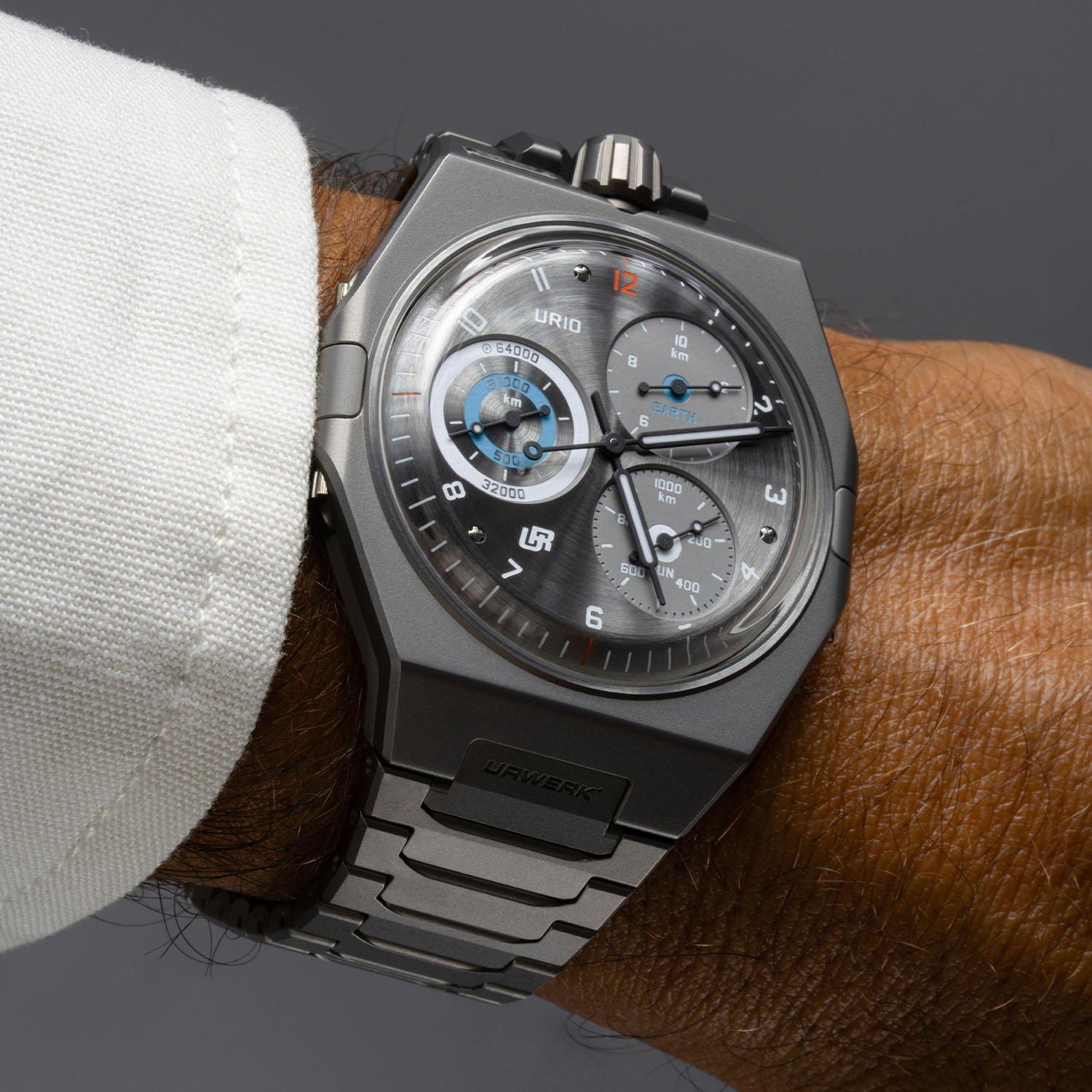
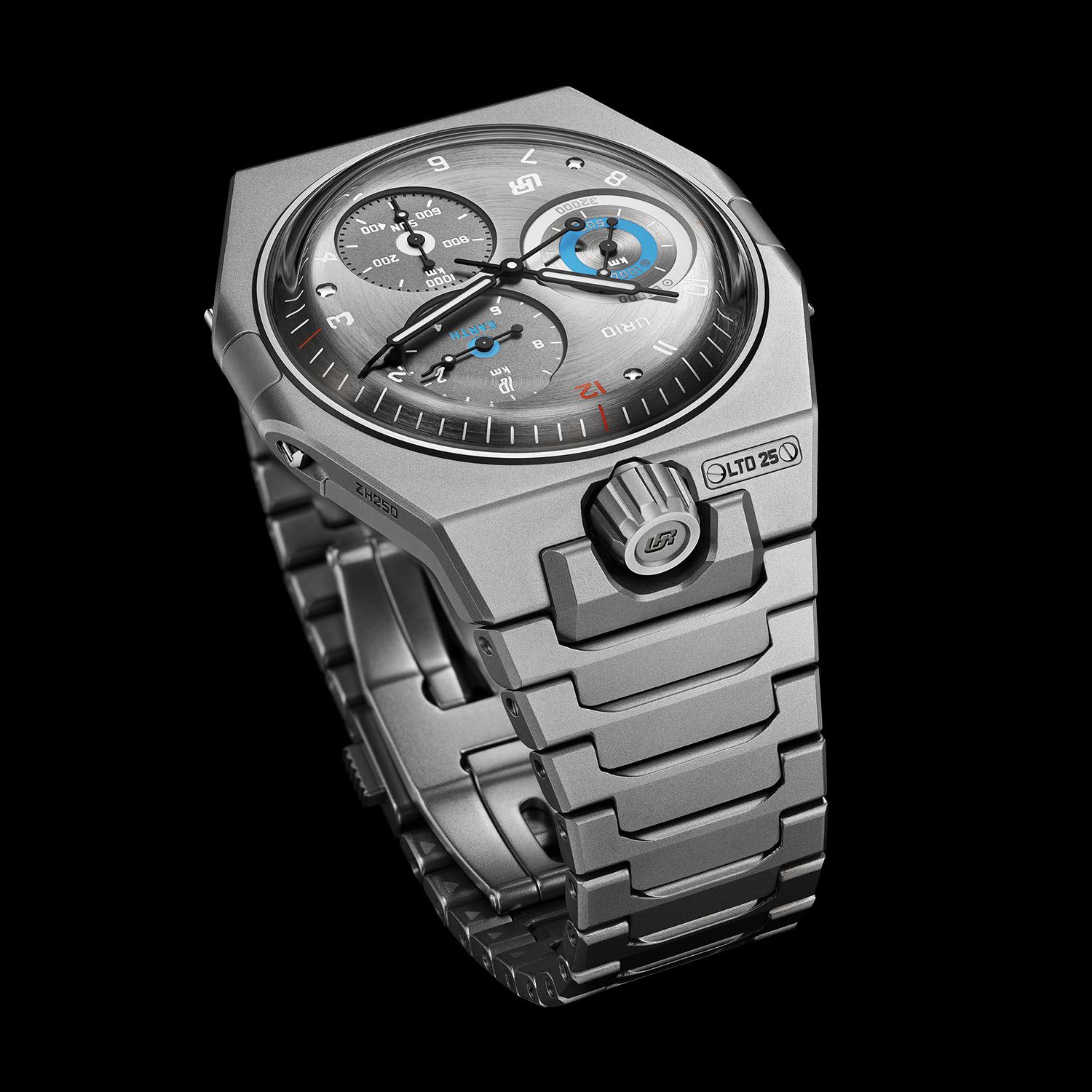
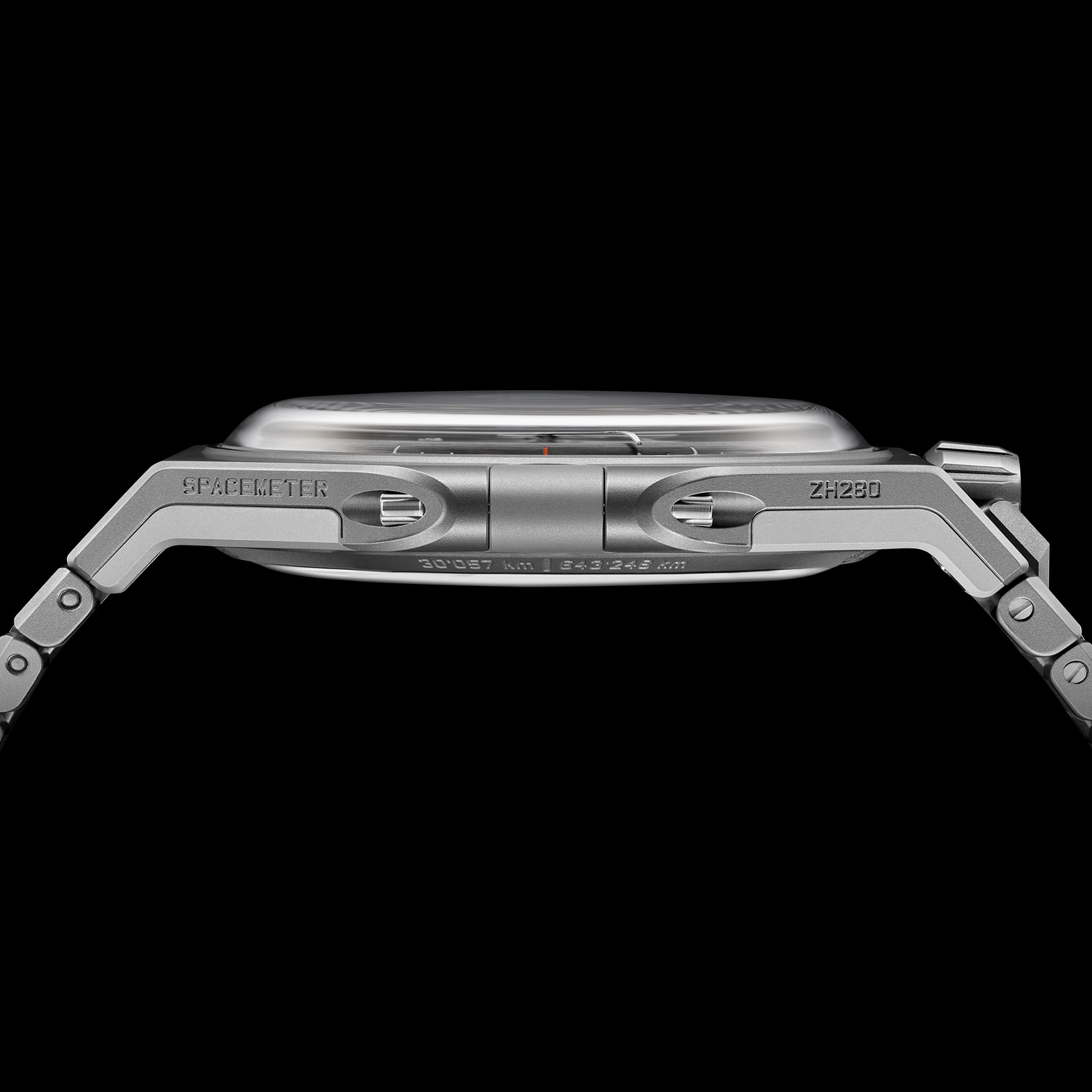
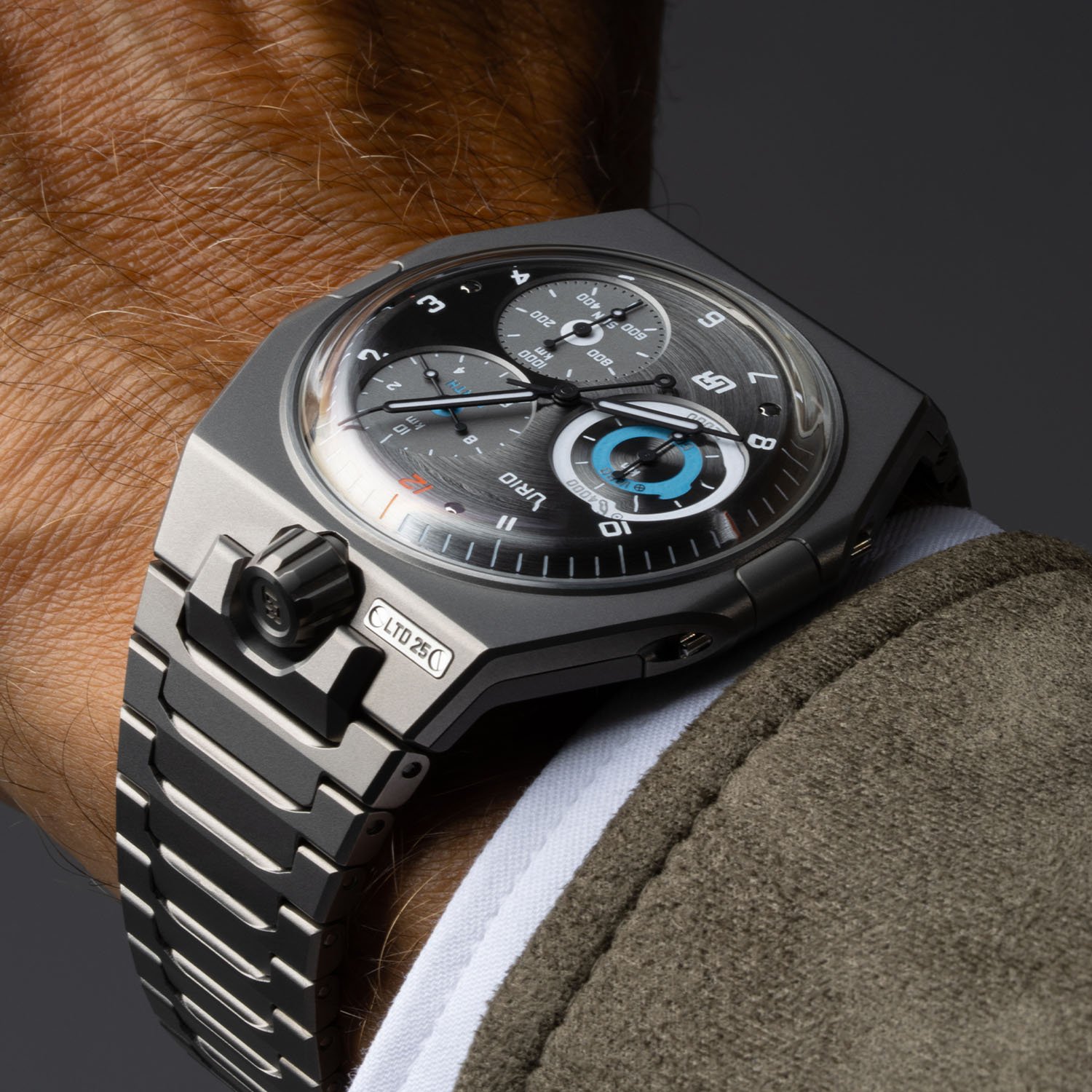
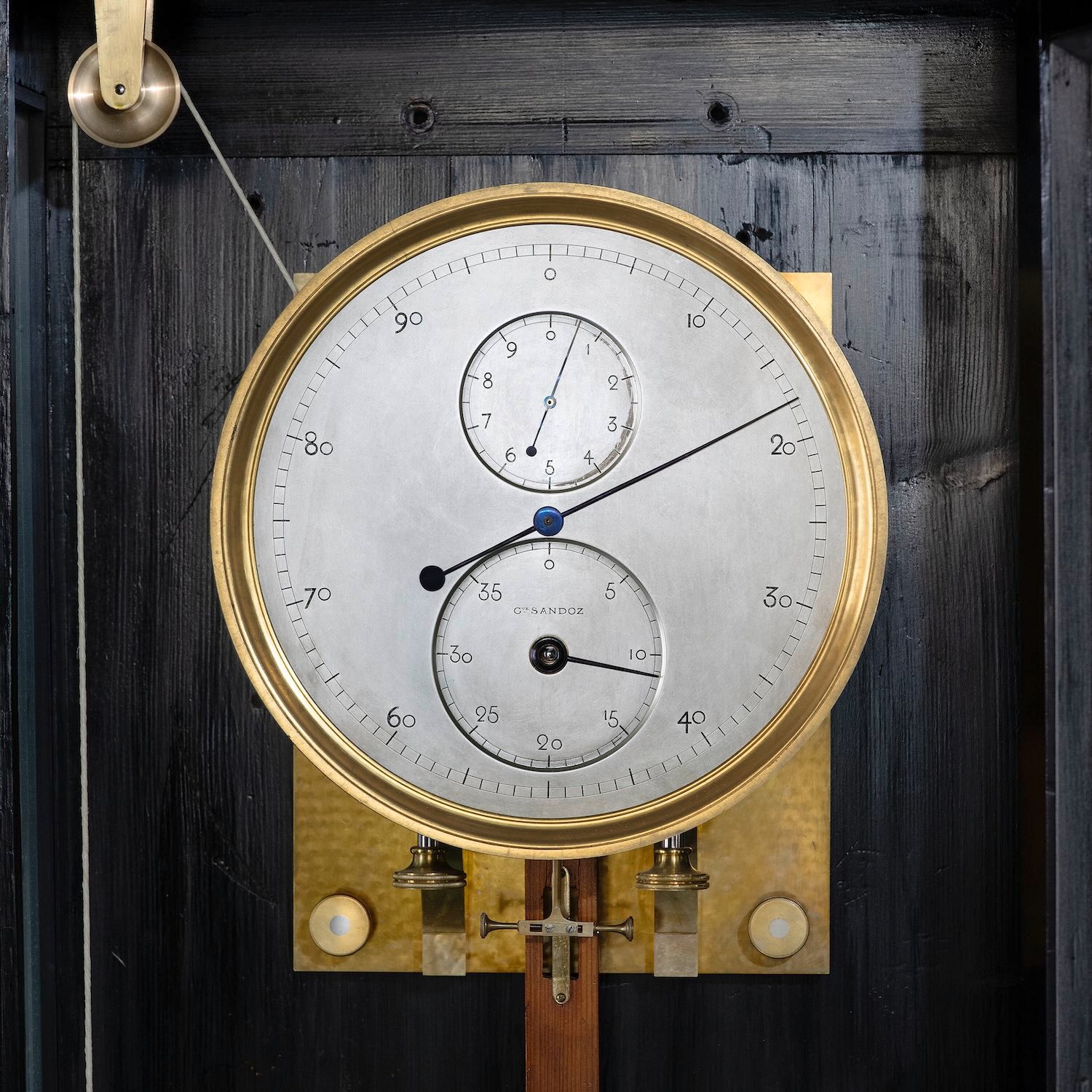
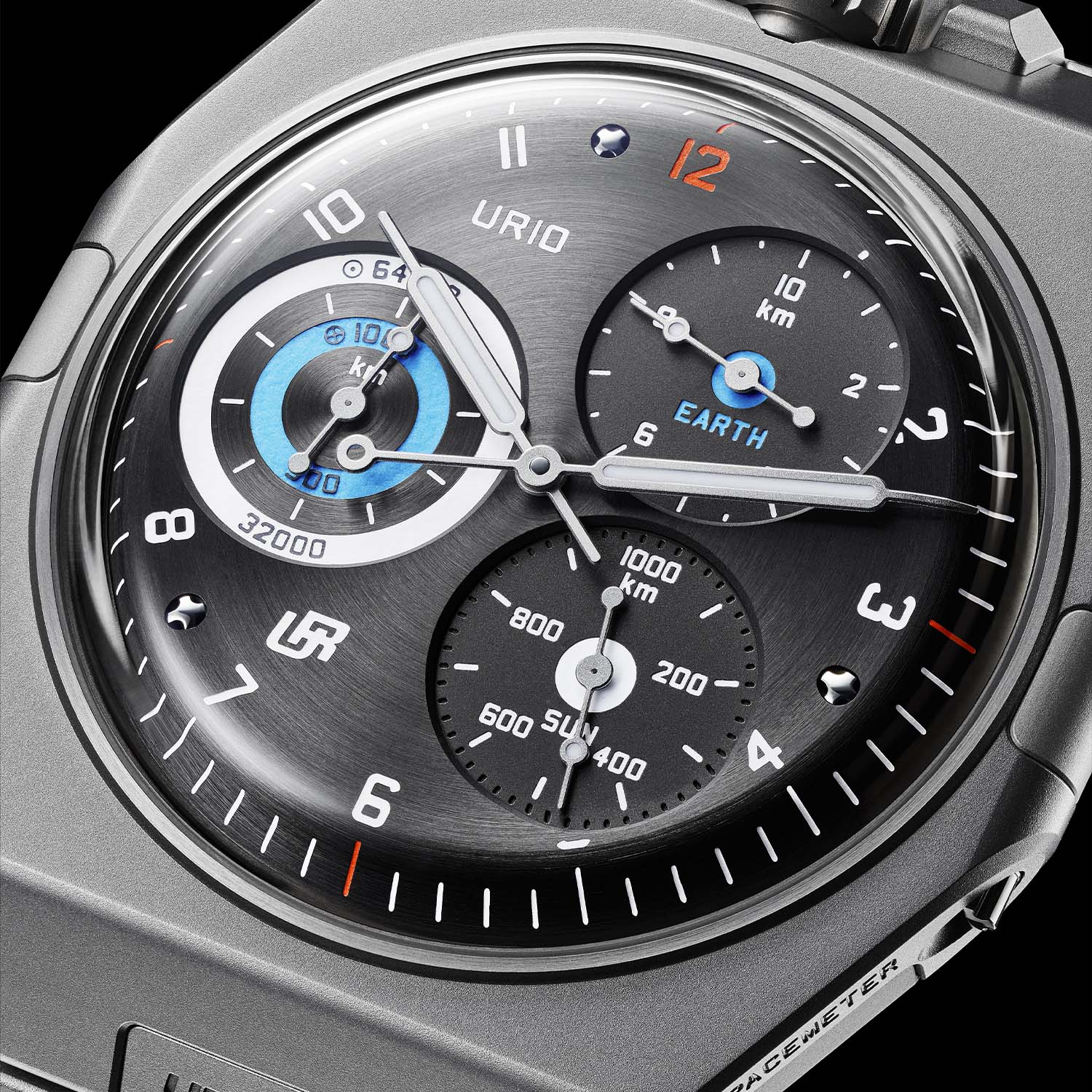
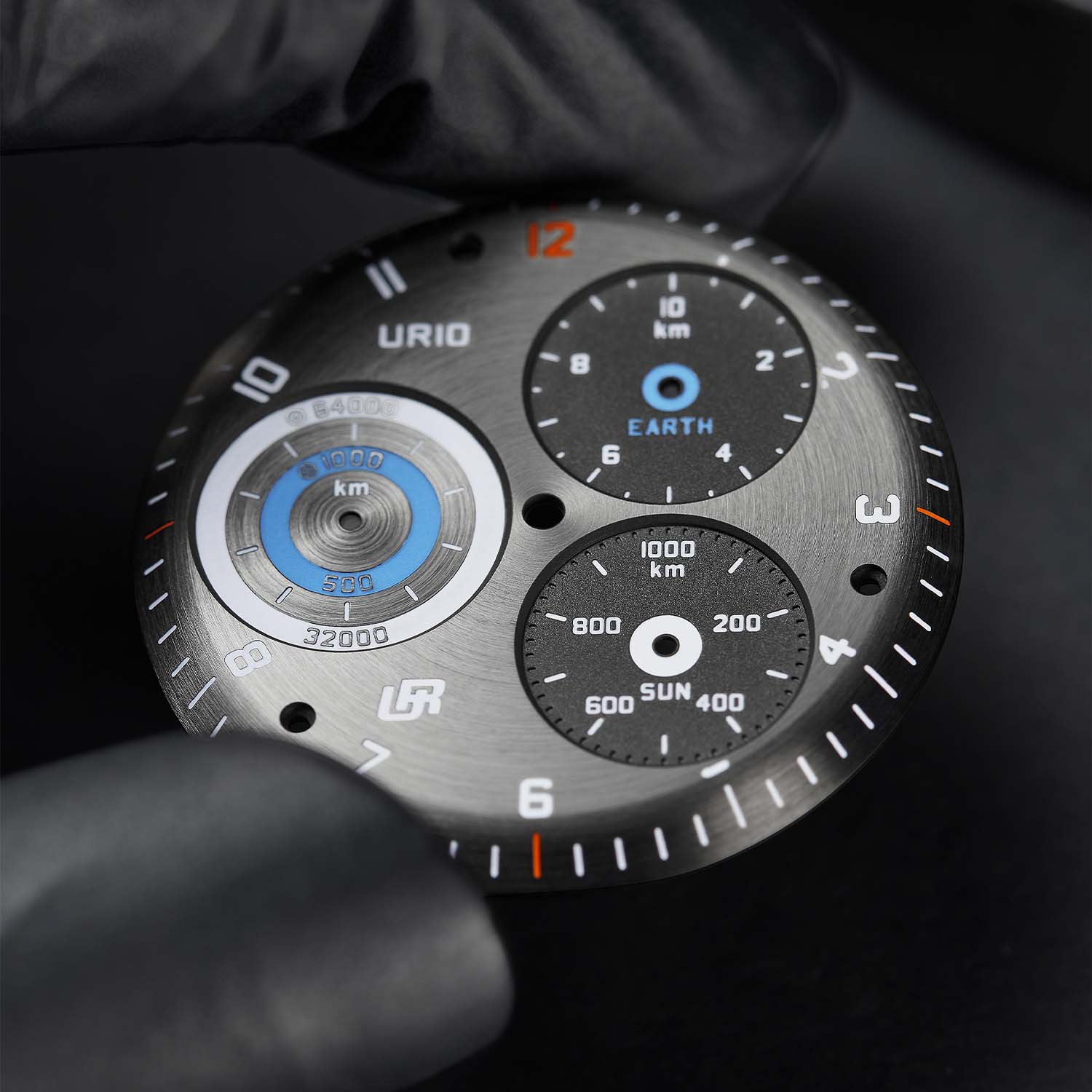
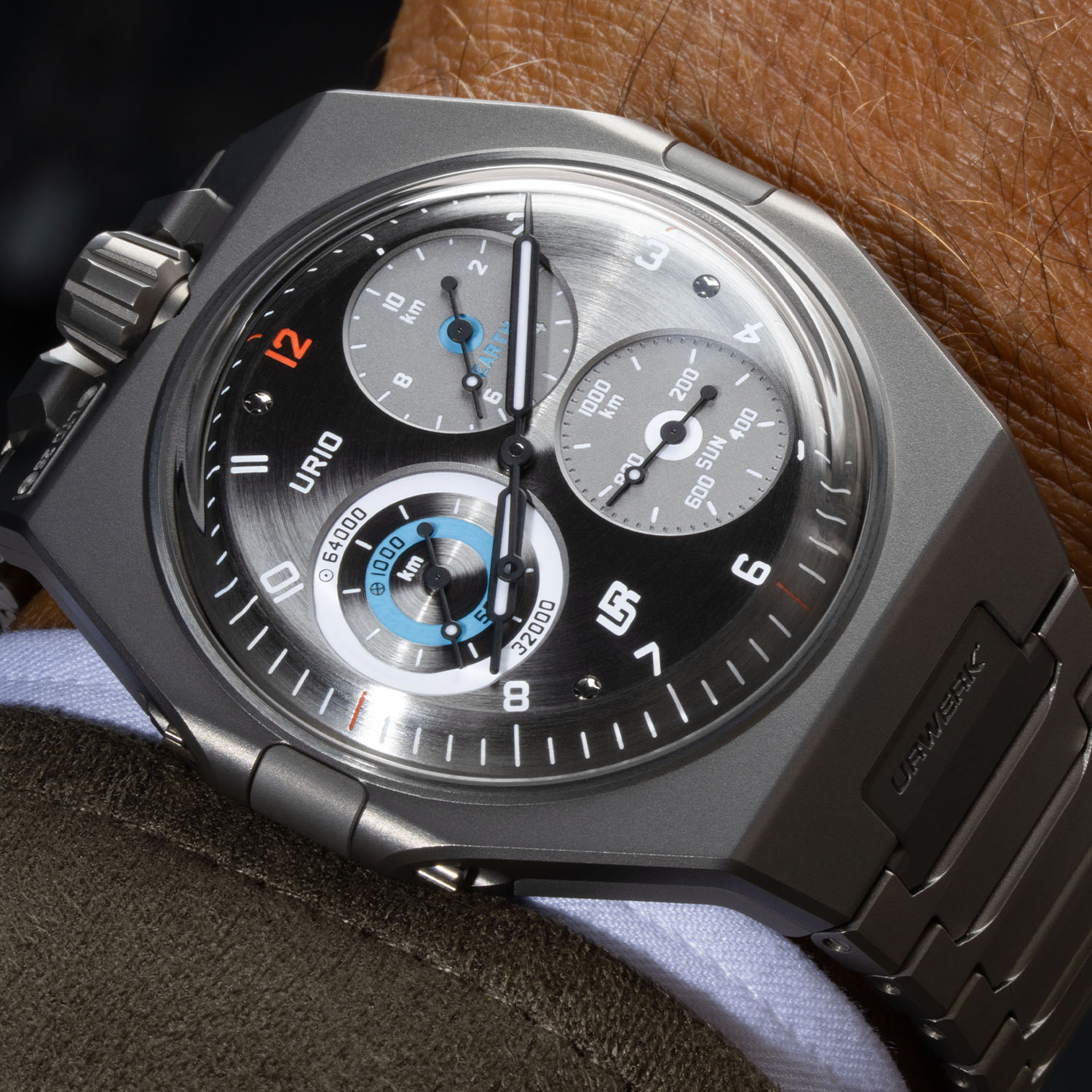
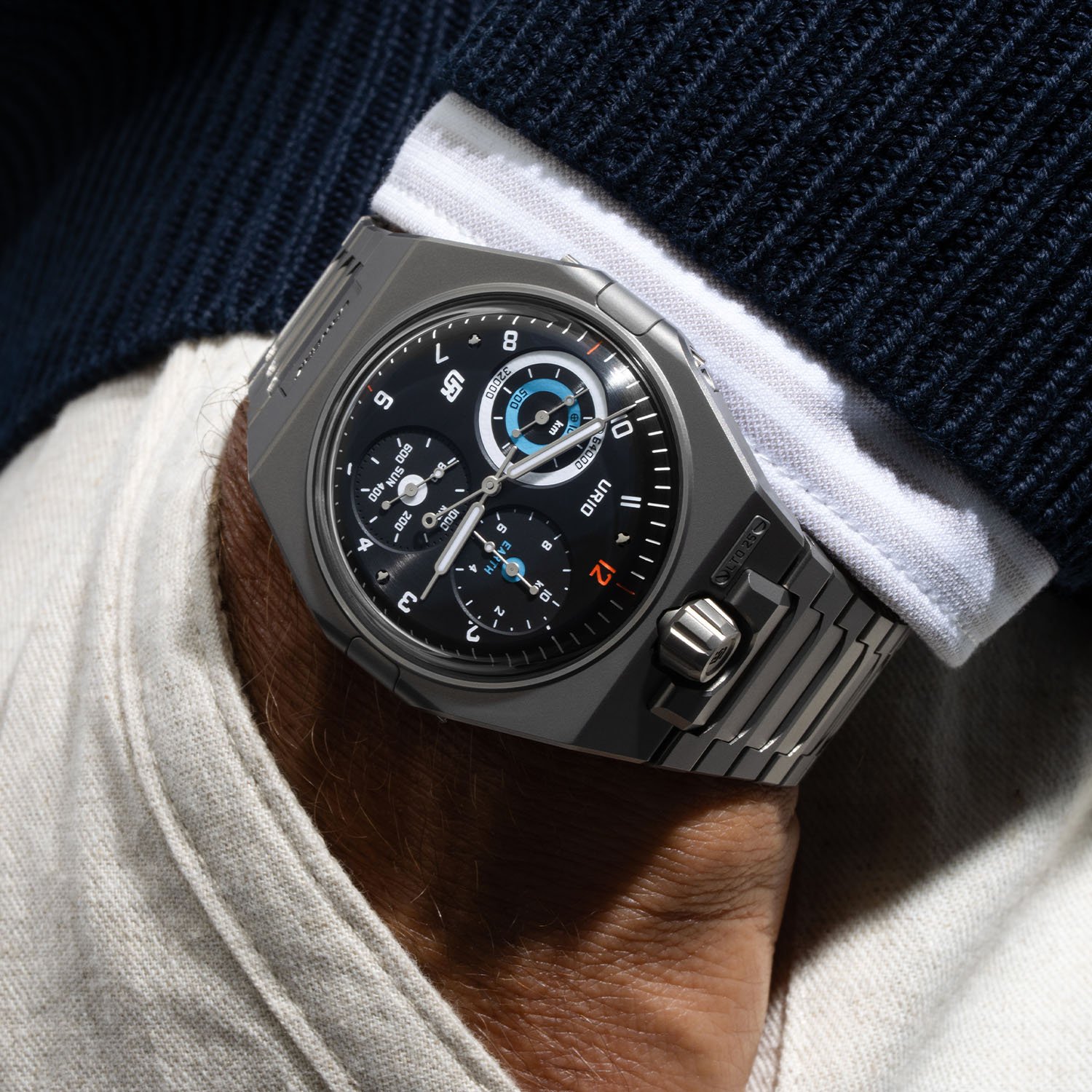
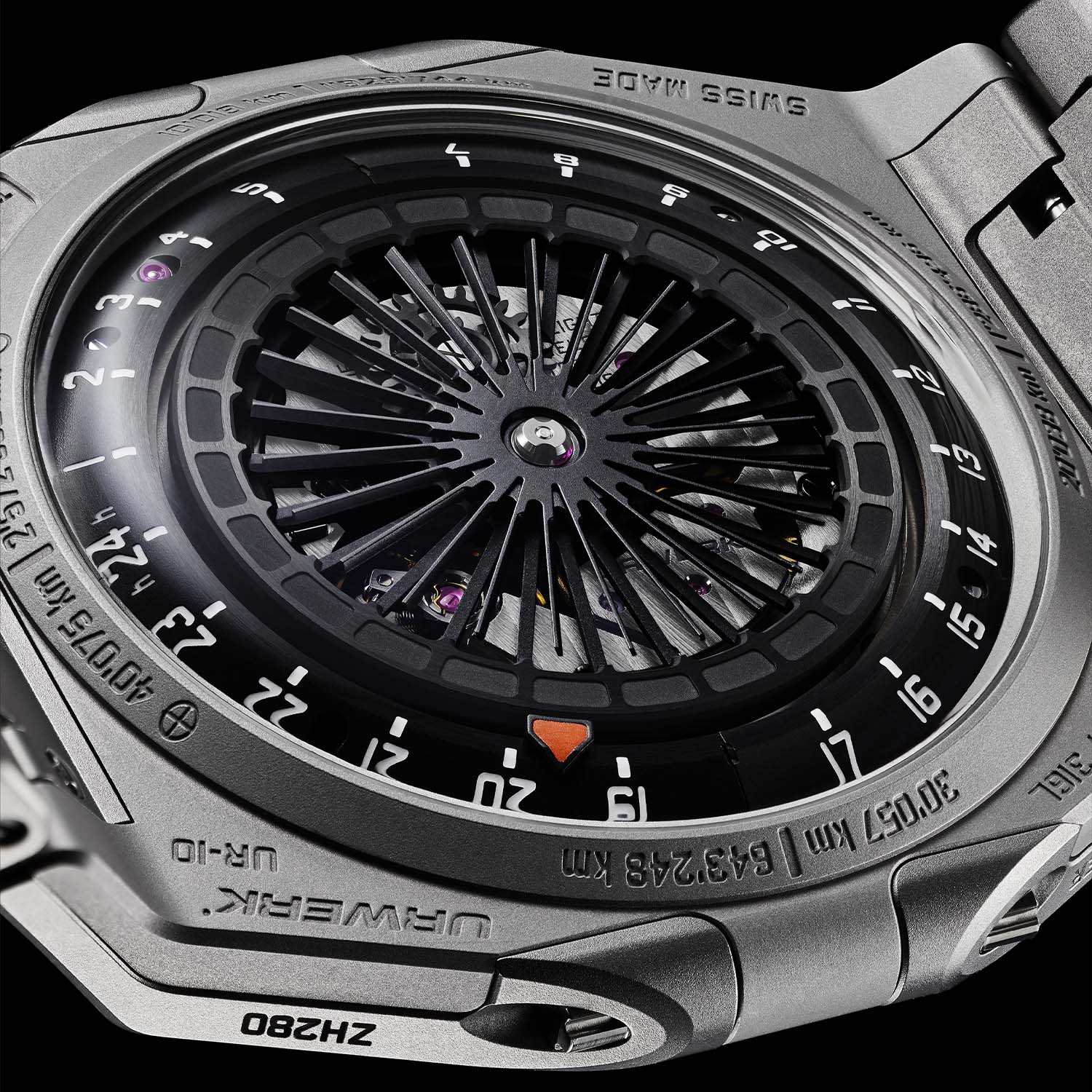
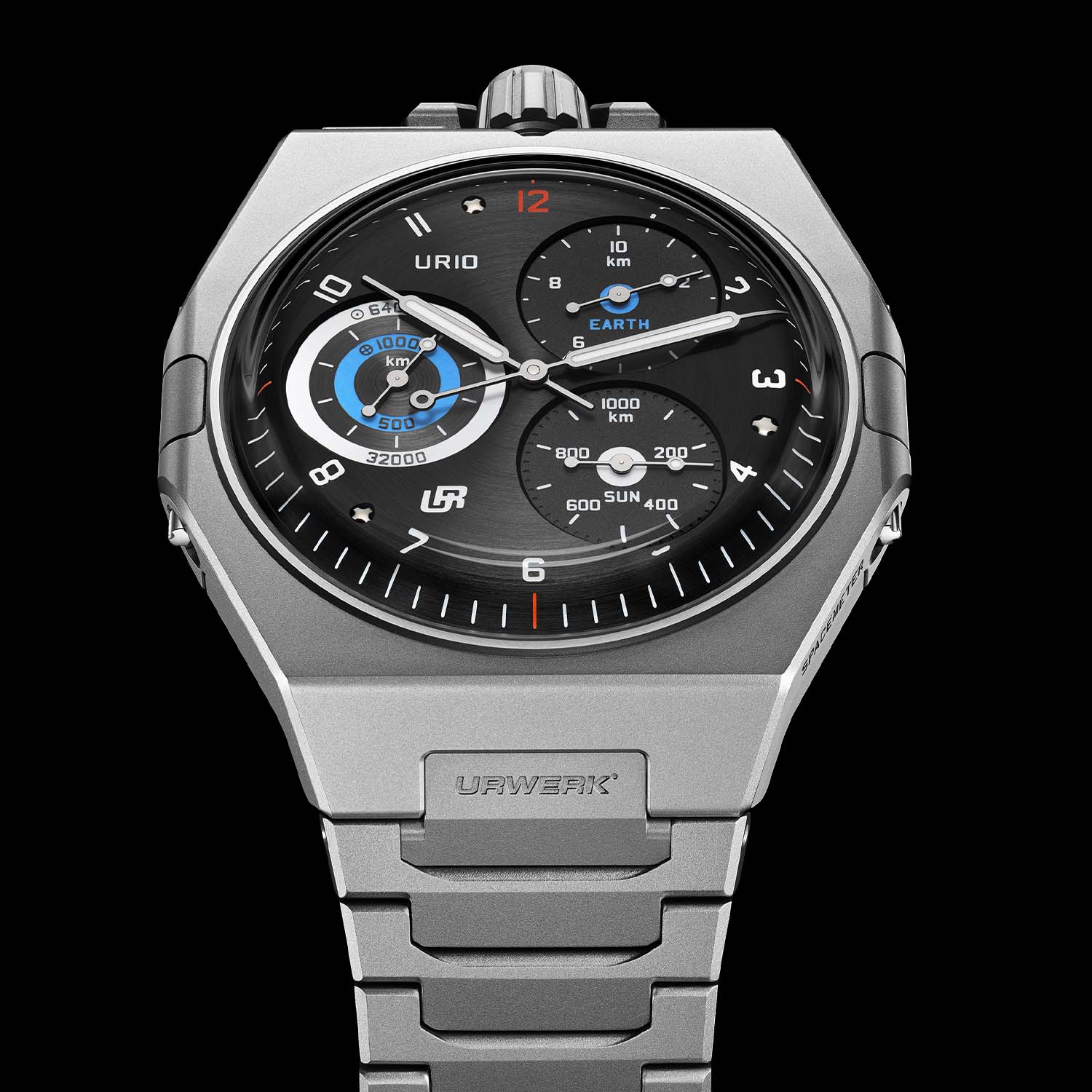
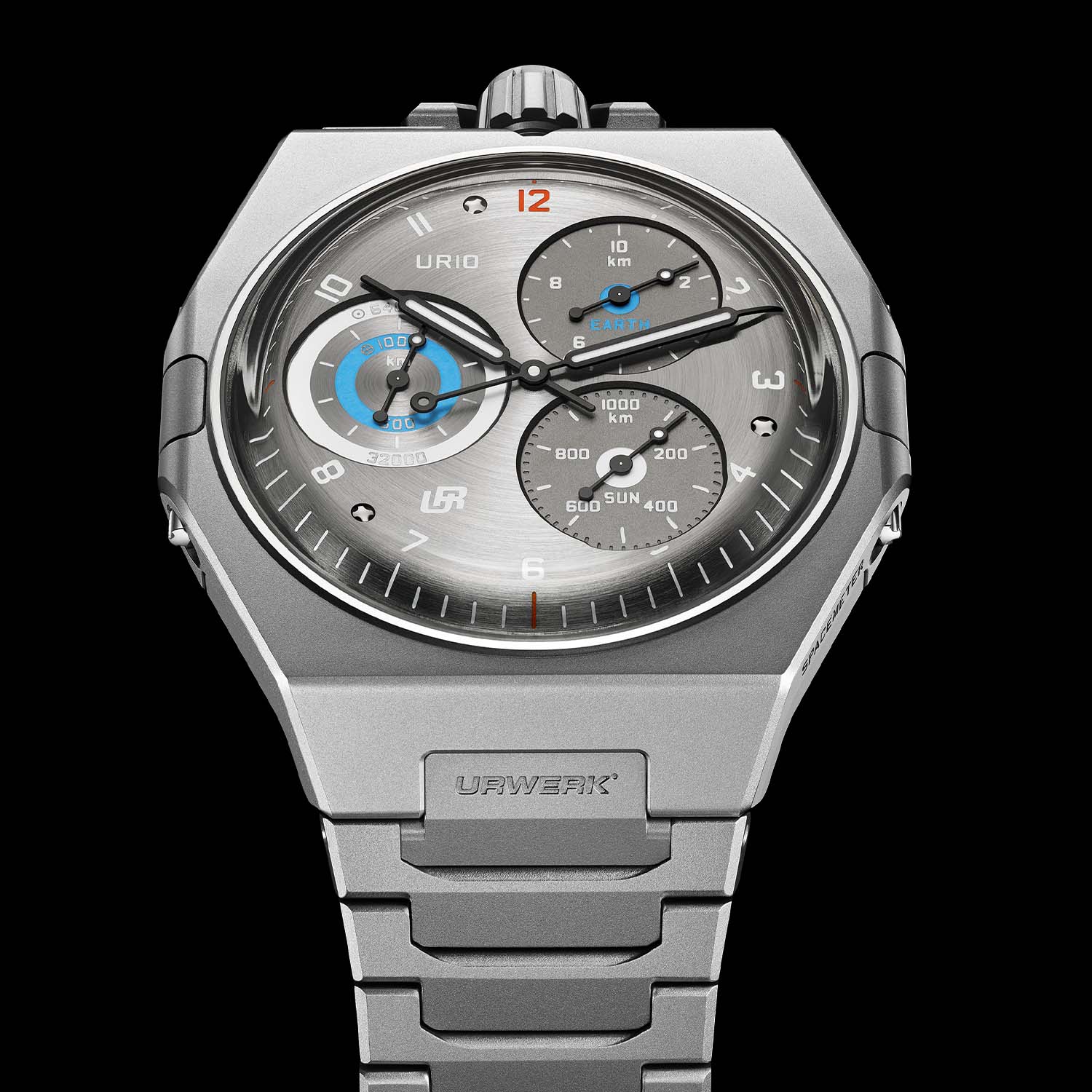
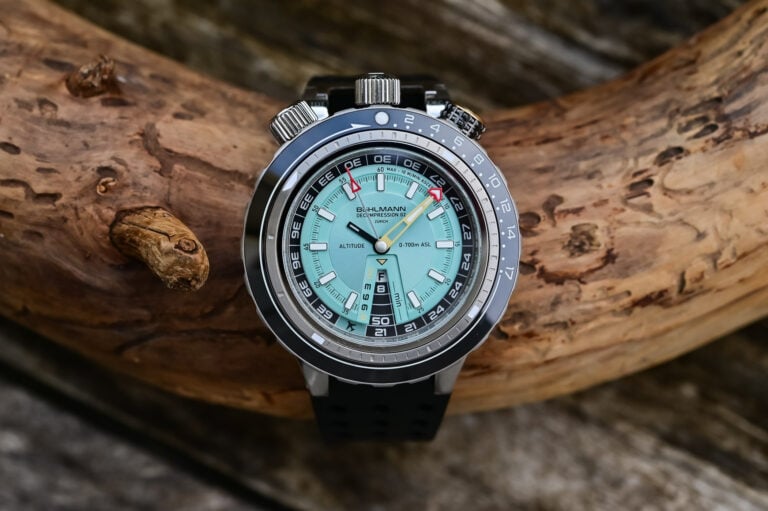
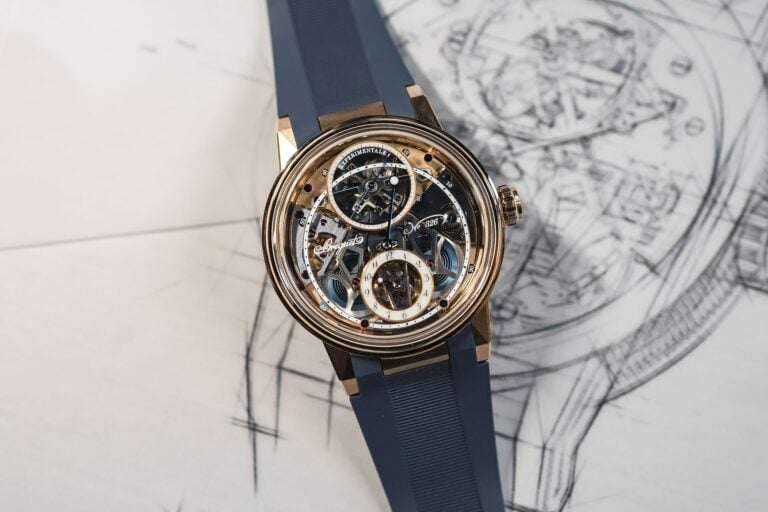
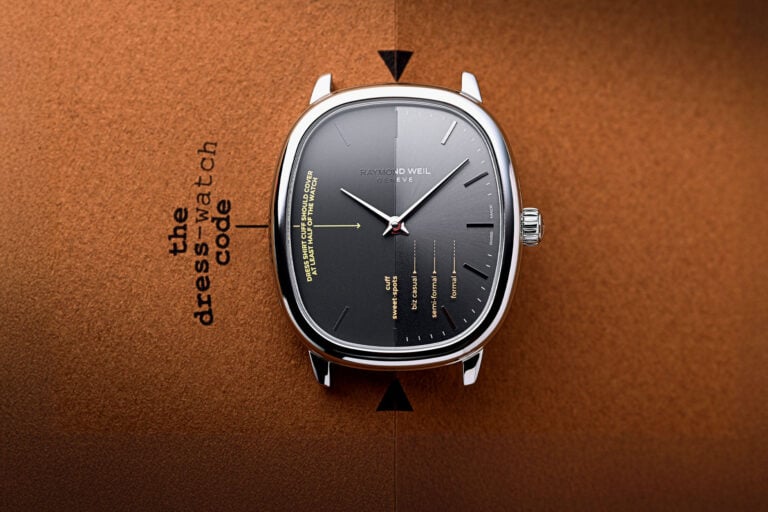
6 responses
“LTD 25”. Come on man.
70000 CHF ????????????? why ???
What is the point with these “functions” on the dial ?
: Earth distance counter at the equator / 10 km at 2 o’clock – Earth rotation around the sun counter / 1,000 km at 4 o’clock – Double concentric distance counter at 9 o’clock – caseback side – Rotation and Revolution on a 24h-scale, caseback side.
Who needs them? Why?
to GK no one needs the functions the same as no one needs 500m off water resistance on there watch but this is URWERK and it is what they do, they do things differently and give different retrospectives on time and functions I like what they have done here. as for price i think you need to read the article again to appreciate the work and R and D involved
I still wonder if people read the article before commenting
GK clearly can’t comprehend that the idea of “time” is just the earth moving around in space lmao.
It’s a novel idea and I get that Urwerk is paying homage to Baumgartner’s clock and all but I think they missed an opportunity to appropriate this more clearly as a method of conventional time keeping. Like tracking the orbit of earth around the sun as a month calendar if they had 12 sub-indicies instead of 10 or something clever like that.